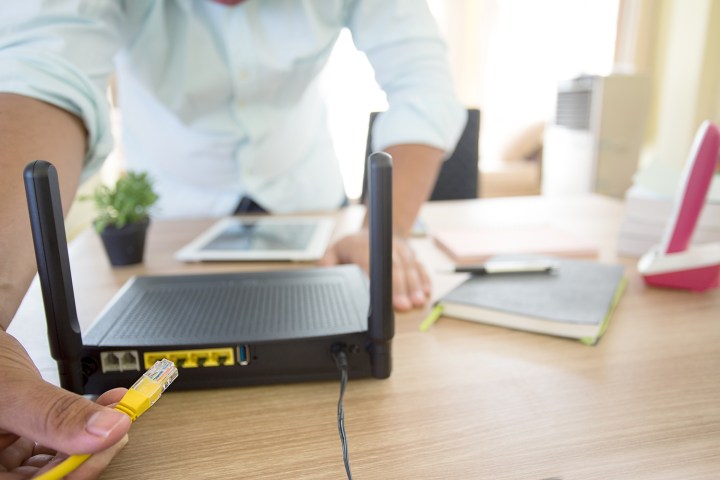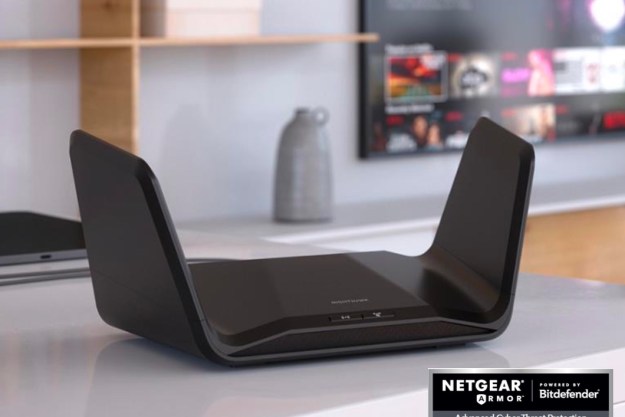
Back-to-school season is upon us, and for many households, that unfortunately means a return to remote schooling. Instead of heading out to a classroom in person, many kids will again attend school this year by firing up video calls and submitting assignments online. Ultimately, this means your home Wi-Fi network will soon need to handle more traffic — especially if you’re a parent who’s currently working from home. So in order to ensure you don’t run into any network congestion issues, we’ve put together a handful of tips to help you make your home Wi-Fi as stable and reliable as possible in the months ahead. Here’s the lowdown:
Get a multiband router
This one might be a no-brainer, but if the router you’re using doesn’t offer multiple frequency bands, then you’re missing out on one of the best parts of modern routers. Whereas most single-band routers operate on the 2.4GHz frequency band, newer dual- and tri-band routers also provide additional networks on the 5GHz frequency band, which has a number of big advantages. Namely, the 5GHz connections can transmit data faster than 2.4GHz ones, which makes them better for households where lots of high-bandwidth activities take place — like Zoom calls, online gaming, and 4K video streaming.
Place your router strategically
The only downside of a 5GHz connection, however, is that the higher frequency doesn’t travel through walls, furniture, and other obstacles quite as well as a 2.4GHz connection can. This is why router placement is important. Ideally, you should place yours near your most important internet-connected devices, as high off the ground as possible, and in a place that’s free of obstructions. Doing so will ensure that you get the best possible speeds for all your devices — especially those that have fixed locations and can’t move around to wherever reception is good like phones and laptops can.

Strategic placement can only get you so far, however. If you have a large house (or particularly dense walls) and you’re still experiencing reduced internet speeds in certain parts of your living area, it might also be wise to invest in a Wi-Fi extender.
Choose your frequency wisely
In order to avoid congestion on your network, it’s helpful to strategically decide which devices are connected to which frequency. For example, it’s often a good idea to place all your smart home devices — video doorbells, smart speakers, connected thermostats, etc. — on the 2.4GHz band, as these don’t generally benefit much from being on the faster 5GHz band. Keeping them on 2.4GHz ensures that your devices with higher speed requirements — computers, gaming consoles, etc. — aren’t competing for bandwidth. Also, since 2.4GHz travels through obstructions better, it’s often a better choice for IoT devices anyway, as they’re often spread further throughout the house.
Set bandwidth priorities
To further avoid congestion, We also highly recommend that you set bandwidth priorities within your networks. Doing so will require you to dig into your router’s settings and make some adjustments, but it’s well worth the effort. By setting priorities, you can decide how much bandwidth is allocated to each device when there’s not enough bandwidth to accommodate every device. So, let’s say you’re on a Zoom call with your boss, but your kid fires up a game of Fortnite to play with her friends online, and at the same time, your significant other starts streaming a 4K movie on Netflix. If you don’t set bandwidth priorities and your internet service isn’t robust enough to handle all these things simultaneously, your super-important Zoom call might start to freeze or cut out intermittently.

These situations can often be avoided by setting bandwidth priorities and telling your router which devices are most important. Then, instead of your Zoom meeting failing catastrophically, your router will always give you the bandwidth you need for your important call, and will instead throttle the data your TV is gobbling up in the other room, potentially causing your significant other’s Netflix video to buffer for a little bit longer than usual.
The specific settings you’ll need to change will vary depending on your router model, but generally speaking, what you’re looking for is the Quality of Service settings. Here’s how to access those on most Netgear, TP-link, and Linksys routers.
Consider your upload speeds
Your internet has two different streams — the incoming stream (downloads) and the outgoing stream (uploads) — and depending on what kind of internet package you pay for, those streams often flow at different speeds. Generally speaking, the one most people are concerned about is download speed, but now that we live in the era of remote schooling and work, upload speed is increasingly important.
Much like how download speeds affect picture/sound quality when streaming a movie on your TV, your internet’s upload speeds affect how others see and hear you on the other end of your videoconference or online game. Slow or unstable upload speeds can cause things like freezing, choppiness, distortion, or garbled audio.
As such, if your household does a lot of simultaneous video calls and large file transfers, then you should make sure your upload stream is equipped to handle all that outgoing data without creating bottlenecks. In general, it’s a good idea to aim for about 10Mbps of download speed and 2 to 3 Mbps of upload speed per person in your house — or potentially more if you want/need to stream in high definition. To find out what you’re currently getting, we recommend using Ookla’s internet speed test.
Editors' Recommendations
- How to change your router’s Wi-Fi password
- The 5 best Wi-Fi adapters for PC in 2024
- How to get Wi-Fi access anywhere at any time
- These are the best Wi-Fi routers for 2023
- What is Wi-Fi 7: Everything you need to know about 802.11be




